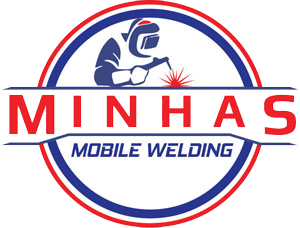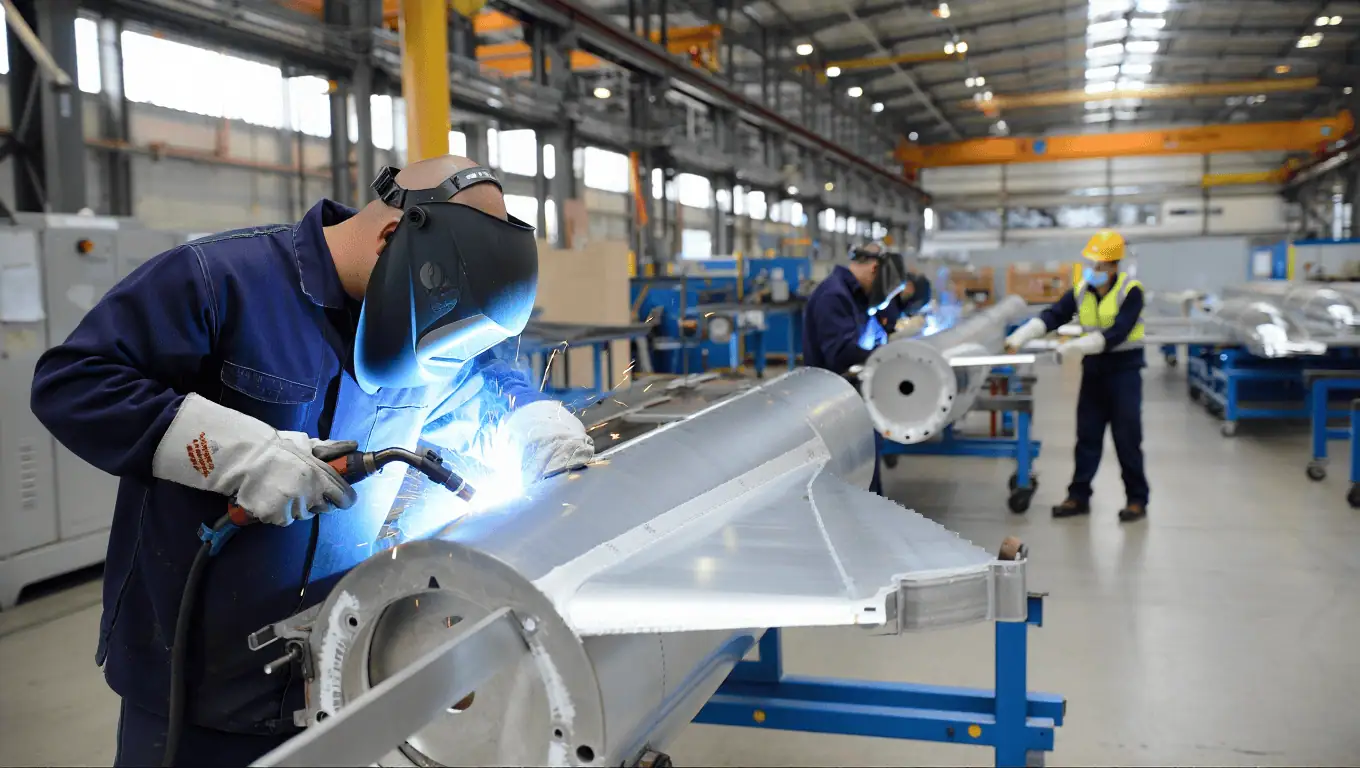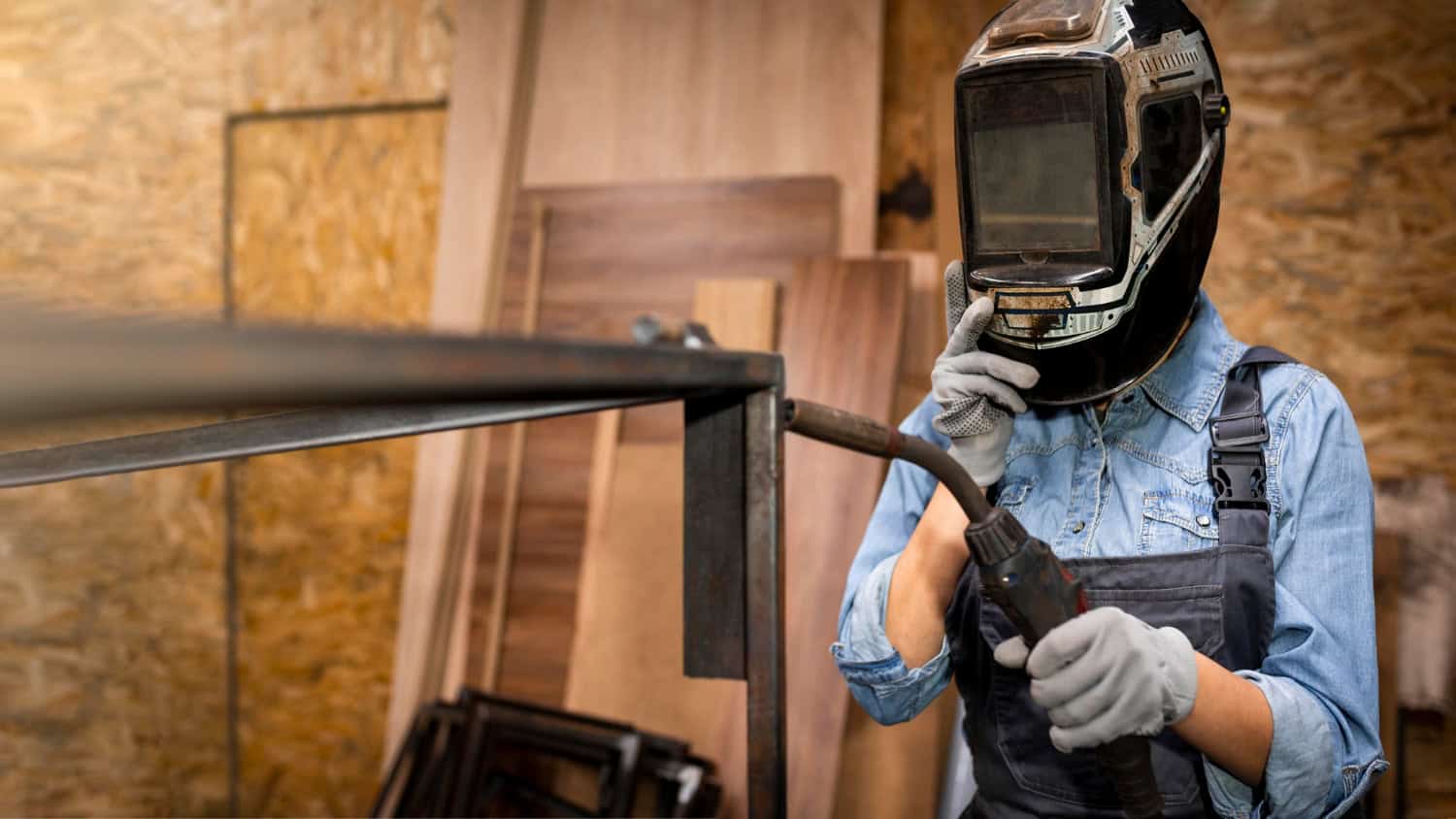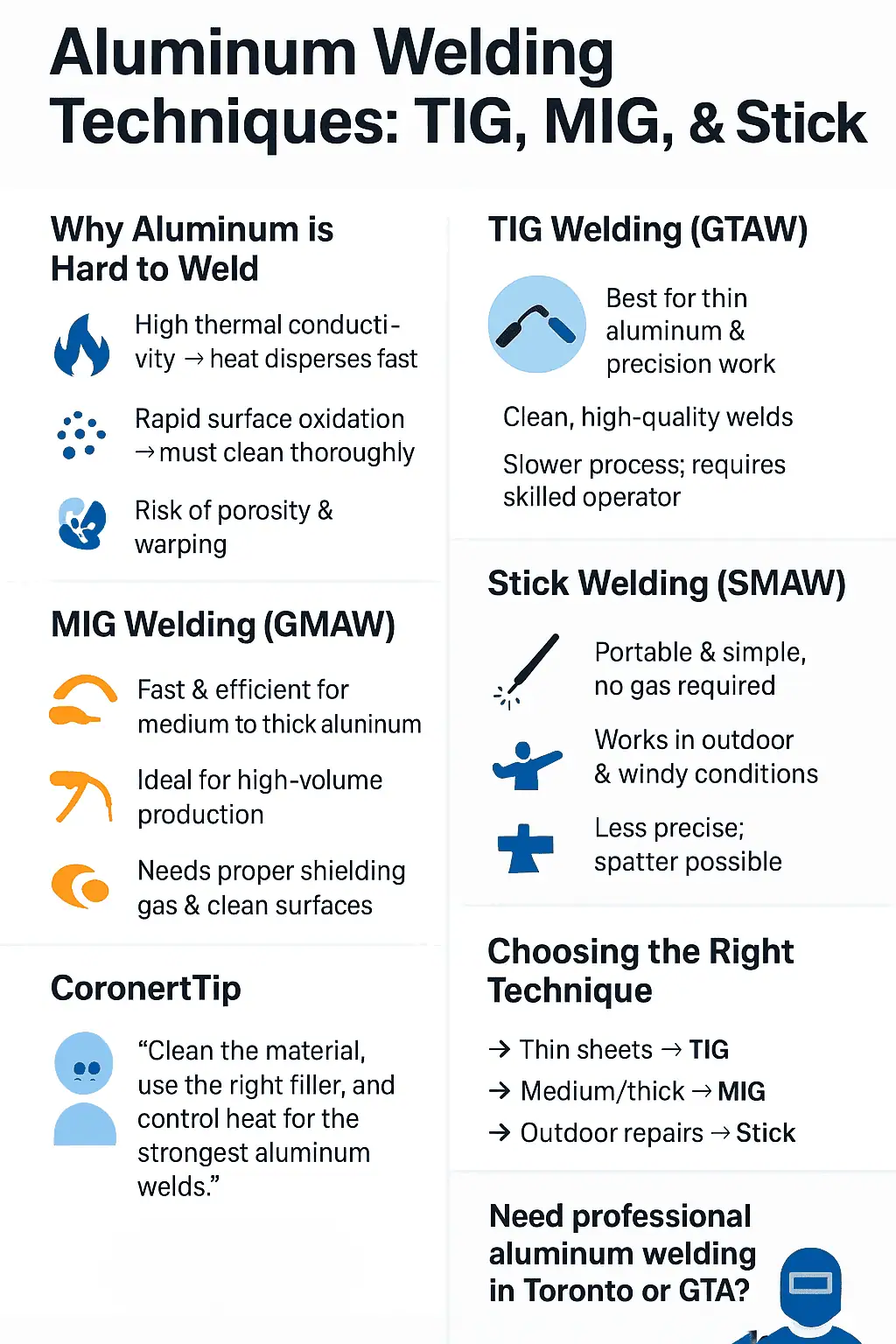Aluminum. Lightweight, durable, and corrosion-resistant. It’s the material that drives modernity, from the sleek bodies of electric vehicles to the massive liquefied natural gas (LNG) tanks on cargo ships. But none of these marvels would exist without a core skill: Aluminum Welding.
More challenging than welding steel, yet infinitely more rewarding, the ability to join aluminum alloys is a non-negotiable requirement for high-tech, high-performance industries globally. This comprehensive guide dives deep into the top industrial applications where expert aluminum welder services are required, explores the market driving this demand, and offers practical advice to anyone searching for the best aluminum welding near me.
Top Industrial Applications Where Aluminum Welding Needed
Market Drivers for Aluminum Welding Services
The market for this specialized skill is not just stable; it’s experiencing rapid growth. Reports project the Aluminum Welding market to reach over $8 billion by 2031, growing at a CAGR of over 5% driven primarily by the automotive and aerospace sectors.| Industry Sector | Primary Driver | Aluminum Welding Need |
| Automotive & Transportation | Lightweighting for EV range & fuel economy | Body frames, battery trays, engine blocks |
| Aerospace & Defense | Maximum strength at minimum weight (payload) | Fuselage, wing structures, fuel tanks |
| Marine & Shipbuilding | Corrosion resistance in saltwater environments | Hulls, superstructures, decks, dock repair |
| Construction & Infrastructure | Durable, low-maintenance, and aesthetic materials | Structural framing, bridges, architectural facades |
This commercial interest highlights why high-quality, professional welding aluminum services are an essential investment, not a mere expense.
🚀 Application Spotlight 1: Automotive and Electric Vehicles (EVs)
The automotive industry is arguably the single largest catalyst for the demand for skilled aluminum welding. The transition to Electric Vehicles (EVs) has intensified this trend, as reducing mass directly translates to increased battery range—the holy grail of EV engineering.
Lightweighting the Modern Vehicle
- Body-in-White (BiW) Structures: Modern high-end and performance vehicles use all-aluminum or mixed-material body structures. Welding aluminum alloys like 6061 and 6063 forms the core structural cage, providing crucial rigidity and crash safety.
- Engine & Transmission Components: Even in traditional internal combustion engine vehicles, aluminum remains key for engine blocks, cylinder heads, and transmission cases due to its superior heat dissipation properties and light weight.
- EV Battery Enclosures and Trays: This is a critical, high-precision application. The battery tray that houses the EV’s power source must be structurally robust to protect against impacts, yet perfectly sealed to guard against moisture and fire. This requires highly precise, often robotic, MIG and TIG aluminum welding.
Expert Insight: “The tolerances for EV battery trays are often measured in microns. Any porosity or inclusion caused by hydrogen in the weld compromises safety and thermal management. This is why we rely on sophisticated AC TIG and Pulsed MIG for these vital assemblies.“
✈️ Application Spotlight 2: Aerospace and Defense
In aerospace, the rule is simple: every pound saved is profit gained. Aluminum, particularly the 2XXX and 7XXX series alloys, has been the backbone of aircraft construction for decades.
High-Strength, High-Performance Structures
- Fuselage and Wing Assemblies: The primary structure of most commercial aircraft relies heavily on welded aluminum components. Alloys like 2219 (used in the Space Shuttle External Tank) and 6061 are favored for their excellent weldability and high strength at elevated temperatures.
- Fuel and Cryogenic Tanks: Tanks for aircraft, rockets, and ground support equipment often use aluminum due to its ability to maintain ductility and strength at cryogenic temperatures (essential for handling liquid oxygen and hydrogen).
- Precision Defense Equipment: From missile casings to drone frames, lightweight structural integrity is key. The demand for portable, high-quality mobile aluminum welding for repair and maintenance on airfields and remote defense sites is constant.
Industry Insight
NASA reports that aluminum alloys make up nearly 80% of modern aircraft components, emphasizing the metal’s unmatched utility in aerospace engineering.
🚢 Application Spotlight 3: Marine and Offshore Fabrication
Saltwater is the nemesis of many metals, but marine-grade aluminum welding offers a powerful solution. Aluminum alloys in the 5XXX series, specifically 5083 and 5052, are renowned for their exceptional corrosion resistance in harsh marine environments.
Hulls, Superstructures, and Offshore Vessels
- Boat and Ship Hulls: From luxury yachts to high-speed ferries, patrol boats, and fishing trawlers, aluminum hulls offer significant speed and efficiency advantages over steel due to the reduced drag from lower weight. The integrity of these welds is paramount for seaworthiness.
- Superstructures: The deckhouses and upper parts of large commercial vessels and cruise ships are often made of aluminum to lower the center of gravity, increasing stability and reducing the hull’s overall stress.
- Offshore Rigs and Platforms: While steel dominates, aluminum is used for helicopter decks, gangways, and equipment housing where ease of maintenance and resistance to the sea’s elements are critical.
This sector often searches for an expert mobile aluminum welder capable of performing dockside repairs, demanding specialized equipment and deep field experience.
🏗️ Application Spotlight 4: Construction, Infrastructure, and General Fabrication
Beyond the heavy hitters, welding aluminum is vital in everyday construction and specialty fabrication, offering aesthetic appeal, structural performance, and longevity.
- Architectural & Structural Components: Aluminum curtain wall systems, facades, window frames, and structural trusses utilize welded aluminum for a clean finish and low maintenance.
- Highway Signs and Bridge Decks: Its weather resistance and light weight make it ideal for large overhead signs and modular bridge decking, reducing the load on supporting infrastructure.
- Pressure Vessels and Storage Tanks: The food, chemical, and pharmaceutical industries rely on welded aluminum tanks for storing sensitive materials, where its non-toxic, non-sparking properties, and purity are essential.
| Alloy Series | Best for Weldability | Typical Industrial Use |
| 3XXX (Al-Mn) | Very Good | Heat exchangers, piping, fuel tanks |
| 5XXX (Al-Mg) | Excellent (Marine Grade) | Hulls, cryogenic tanks, pressure vessels |
| 6XXX (Al-Mg-Si) | Good (Structural) | Automotive frames, architectural structure |
Application Spotlight 5: Electronics & High-Tech Equipment
Modern tech relies on aluminum for its thermal conductivity and light weight.
Uses
- Heat sinks
- Lightweight casings
- Cooling systems
- Precision housings for industrial electronics
Why Welding Is Required
Some electronic components need custom-fabricated aluminum housings that can withstand heat without bending or cracking.
Application Spotlight 6:Food Processing & Medical Equipment
Clean, sanitary environments benefit massively from aluminum’s properties.
Applications
- Worktables and racks
- Cleanroom supports
- Sterilization equipment
- Custom medical fabrication
Aluminum’s corrosion resistance and cleanliness make it ideal for industries that cannot risk contamination.
TIG vs. MIG: Which is Best for Aluminum?
When you hire an aluminum welder, they will typically choose between two methods based on the job requirements.
TIG Welding (GTAW)
- Best For: Thin materials, aesthetic welds, automotive parts, aerospace components.
- Pros: Highest quality welds, precise control, visually beautiful “stack of dimes” look.
- Cons: Slow process, requires high operator skill.
MIG Welding (GMAW)
- Best For: Thick plates, ship hulls, structural construction, trailer manufacturing.
- Pros: Fast travel speeds, easier for long welds.
- Cons: Higher risk of porosity, less visually appealing than TIG.
🔧 The Expert Edge: Navigating the Challenges of Aluminum Welding
These challenges are why specialized expertise is crucial when looking for an aluminum welder or a shop offering high-quality aluminum welding near me.
1. Oxide Layer: Aluminum forms a tough, ceramic-like oxide layer (Al2O3) that melts at approx 2072.C – far higher than pure aluminum’s approx 660.C melting point.
- Solution: Use Alternating Current (AC) TIG welding. The AC cycle’s electrode positive (EP) half-cycle cleans the surface, blasting away the oxide layer to expose the molten metal beneath.
2. High Thermal Conductivity: Aluminum dissipates heat extremely quickly, making it difficult to maintain a stable weld pool and achieve deep penetration.
- Solution: Employ higher amperage settings and fast travel speeds. For thicker sections, preheating the workpiece slightly can help maintain the necessary welding temperature.
3. Porosity: Molten aluminum readily absorbs hydrogen (from moisture, oil, or dirty material), which is then expelled during solidification, leading to small, trapped bubbles (porosity) that weaken the weld.
- Solution: Meticulous preparation is non-negotiable. Use a dedicated, clean stainless steel brush and non-chlorinated solvent to clean the joint immediately before welding. Ensure shielding gas (100% Argon is standard) is pure and the base metal is completely dry.
4. Hot Cracking: Certain alloys (like some 6XXX and 7XXX series) are susceptible to cracking upon cooling due to shrinkage stress.
- Solution: Use a carefully selected filler metal (often from the 4XXX or 5XXX series) that lowers the cracking susceptibility of the weld zone chemistry.
📞 Ready to Weld the Future?
Don’t let the technical challenges of aluminum hold your project back. From high-speed transport to essential industrial fabrication, our team provides certified, on-site, and in-shop aluminum welding services tailored to the highest industry standards. Discover the difference that precision, preparation, and specialized knowledge can make for your structural, marine, or automotive components.
Explore our specialized aluminium welding services today and get free a quote for any Aluminum project: Click here to view our Aluminium Welding Services



